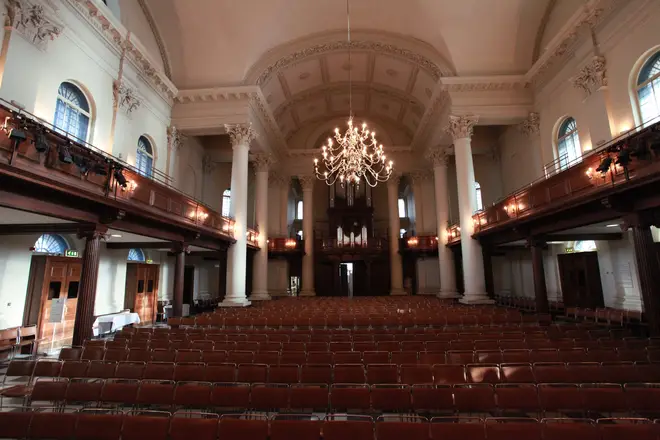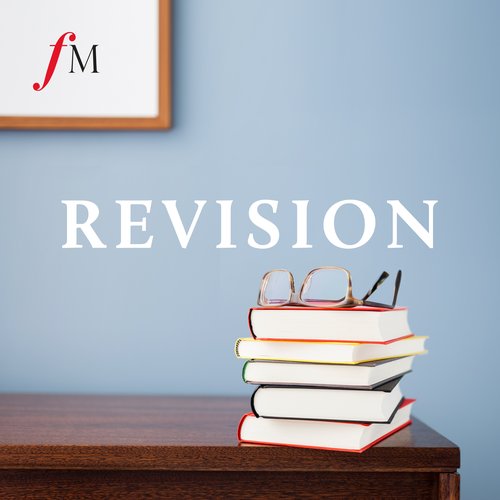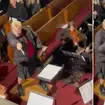How do the new coronavirus tiers affect live music and performing arts in the UK?
26 November 2020, 17:01 | Updated: 27 November 2020, 08:38

When England comes out of its second national lockdown on 2 December, we will be in a new system of tiered coronavirus restrictions – but what do these tiers mean for concerts and other music-making?
It has been confirmed that England will come out of its second national coronavirus lockdown on Wednesday 2 December as planned – but with stricter tiered restrictions. Different regions will be placed in either Tier 1: Medium alert, Tier 2: High alert, or Tier 3: Very High alert.
What do these tiers mean for concerts and other music-making?
Well, depending on what tier you are in, things look similar – we stress similar – to how they were before England (and prior to that, Wales and northern Ireland) went back into lockdown on 5 November.
The main difference is the government has introduced audience “caps” where performances are allowed to go ahead again – which is in Tier 1 and Tier 2 areas (see details below). The Musicians Union has said this new system needs “a radical rethink if the live sector is going to see any recovery in the short to medium term.”
Here’s the breakdown of what the new restrictions and audience caps mean for music in those respective tiers, and what types of live music-making will be allowed to resume nation- and UK-wide under the new restrictions.
COVID WINTER PLAN
— Oliver Dowden (@OliverDowden) November 23, 2020
Indoor performances back again in Tiers 1 and 2
Numbers capped at 1000 or 50% of capacity, whichever is lower
Performances will not be allowed in Tier 3, in line with other leisure and hospitality settings pic.twitter.com/wRD0D0mzVx
What live music-making is allowed in the three coronavirus tiers?
“Indoor performances back again in Tiers 1 and 2,” culture secretary Oliver Dowden summarised in a tweet on 23 November (see above). “Numbers capped at 1000 or 50 percent of capacity, whichever is lower. Performances will not be allowed in Tier 3, in line with other leisure and hospitality settings.”
Details were expanded and clarified by the government on 26 November, and the tiers are as follows when it comes to music-making:
Tier 1 (Medium alert)
· Early closure (11pm) applies to casinos, cinemas, theatres, concert halls, museums, bowling alleys, amusement arcades, funfairs, theme parks, adventure parks and activities and bingo halls. Cinemas, theatres and concert halls can stay open beyond 11pm in order to conclude performances that start before 10pm
· Public attendance at outdoor and indoor events (performances and shows) is permitted, limited to whichever is lower: 50 percent capacity, or either 4,000 people outdoors or 1,000 people indoors
Tier 2 (High Alert)
· Early closure (11pm) applies to casinos, cinemas, theatres, museums, bowling alleys, amusement arcades, funfairs, theme parks, adventure parks and activities, and bingo halls. Cinemas, theatres and concert halls can stay open beyond 11pm in order to conclude performances that start before 10pm
· Public attendance at outdoor and indoor events (performances and shows) is permitted, limited to whichever is lower: 50 percent capacity, or either 2,000 people outdoors or 1,000 people indoors
Tier 3 (Very high Alert)
· Indoor entertainment and tourist venues must close. This includes cinemas, theatres and concert halls – as well as indoor play centres, casinos, bingo halls, bowling alleys, amusement arcades and snooker halls.
· There should be no public attendance at spectator sport or indoor performances and large business events should not be taking place. Elite sport events may continue to take place without spectators
· Large outdoor events (performances and shows) should not take place, with the exception of drive-in events

Boris Johnson issues Christmas message as Govt confirms households can mix over Christmas
Musicians’ Union has called out the government’s decision to impose new audience caps where live music can return, in Tiers 1 and 2. Horace Trubridge, MU General Secretary, said: “Our members have had little or no work since March and many have failed to qualify for the government’s support schemes.
“Having endured months of financial misery, musicians are desperate to get back to work. The announcements around live events and the new tier system make that prospect even more distant, and the lack of consistency and common sense is glaring.”
What are the three tiers of regional coronavirus restrictions after 2 December?
The three new coronavirus tiers are: Tier 1: Medium alert, Tier 2: High alert, and Tier 3: Very High alert.
Find out what tier your region is in >
Tier 1 sees minimal restrictions, with the ‘rule of six’ still in effect for meeting people indoors and outdoors, businesses and venues open in a COVID-secure manner, and music-making allowed to resume – but with new caps on already-socially-distanced and reduced audiences (see above) and early closure in place (11pm).
Tier 2 is similar to Tier 1, but adds restrictions to socialising and calls ‘rule of six’ meet-ups not to happen indoors, and only outdoors safely. While venues are allowed to stay open, they can not do so if they’re only serving alcohol – pubs have to serve substantial meals to stay open in Tier 2. And audiences at live events are even more reduced than in Tier 1, with early closure still in place (11pm).
Tier 3 sees all pubs, venues and entertainment areas closed, much like during a full national lockdown. Socialising with other households ceases and hospitality can only be takeaway. The main way Tier 3 differs from a full lockdown is gyms and entertainment can stay open if COVID-secure.
Visit www.gov.uk/guidance for full guidance, and always refer to government sources for the most accurate and up-to-date information.


































